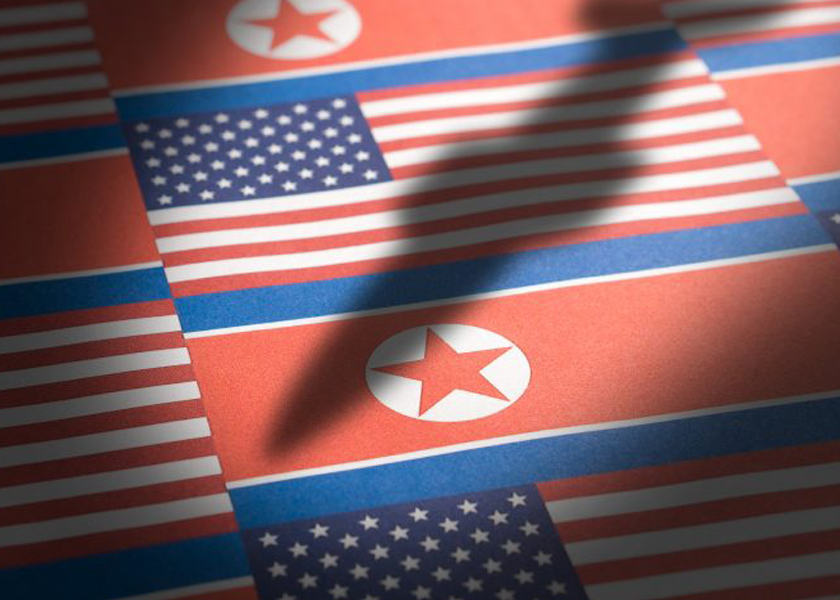Diplomatic engagement is not “cozying up” to North Korea; rather, it is the prerequisite for peaceful coexistence and averting a nuclear war | By Cathi Choi (Fall 2024)

At the recent presidential debate, it became clear that former President Donald Trump and Vice President Kamala Harris differ widely on their approaches to foreign policy. While neither candidate revealed specifics about how they’d address North Korea, they gave hints about their approaches: Trump boasted that the country is afraid of him, while Harris accused Trump of being manipulated by dictators, noting that he has exchanged “love letters” with Jong-un Kim.
Throughout her campaign, Harris’ main talking point about North Korea has been to distance herself from Trump, saying she will not cozy up to dictators like Kim. Unlike in 2020, the 2024 Democratic Party Platform excluded any reference to the goal of North Korea’s denuclearization or improved human rights and instead focused on strengthening the trilateral alliance with South Korea and Japan. Harris’ campaign later clarified that denuclearization is still a priority, but the lack of a specific plan on Korea from either candidate is troubling.
The Korean Peninsula has become the flashpoint for the next potential nuclear war. As South Korea has escalated its bid for nuclear weapons, North Korea has vowed to exponentially expand its nuclear arsenal and last week launched multiple short-range ballistic missiles for the first time in over two months. The next U.S. president must take urgent action to avert escalation and nuclear war in Korea.
Unfortunately, Harris’ current rhetoric does not bode well for peace. While stating that she is not President Joe Biden, she has rooted her policy stance in strengthening the Japan-Korea-U.S. alliance (JAKUS), established by Biden at Camp David in 2023.
This trilateral alliance has not only whitewashed Japan’s war crimes, including those stemming from its brutal colonization of Korea, but has also escalated tensions in the region through normalizing joint military exercises. JAKUS is just one of the U.S.-led alliances in the Asia-Pacific region that scholar Walden Bello has called a council of war in a bid to contain China.
For his part, Trump left a tattered trail of broken promises and inflammatory threats. In his first year in office, Trump threatened North Korea with, “fire and fury like the world has never seen.” This provoked Pyongyang to test what it said was a hydrogen bomb, its sixth nuclear test, and an intercontinental ballistic missile (ICBM) capable of reaching the U.S.
This was followed by historic summits between the leaders of South and North Korea, and between Trump and Kim, who promised to end the state of war and usher in a new era of peace on the Korean Peninsula. Ultimately, Trump squandered the opportunity for peace at the Hanoi summit in 2019 by insisting that North Korea hand over its entire weapons program without any concessions from the U.S., badly damaging relations with North Korea.
While offering to meet with North Korean officials, “anywhere, anytime, without preconditions,” the Biden administration failed to advance U.S.-North Korea relations and eroded them by increasing militarization in the region and maintaining the strategy of complete, irreversible, and verifiable denuclearization (CVID) of North Korea. Biden continues to rely on a deterrence strategy that has failed to abate the increased threat of nuclear conflict. Biden’s administration has also repeatedly renewed a Trump-era travel ban on North Korea that has cut off the possibility of people-to-people engagement and family reunions.
It may be hard to remember that not so long ago, U.S. presidents bolstered peacekeeping efforts on the Korean Peninsula. President Bill Clinton supported President Dae-Jung Kim’s Sunshine Policy of engagement with North Korea, and from 1994 to 2002, reaped the benefits of relatively peaceful coexistence: North Korea conducted zero nuclear tests and only one ballistic missile test. When President George Bush took office, however, this progress was thwarted by his characterization of North Korea as part of the axis of evil, and with John Bolton leading the charge to scrap the Agreed Framework.
A majority of people in the U.S. still support diplomatically engaging with North Korea to reduce tensions and avoid military confrontation. Diplomatic engagement is not “cozying up” to North Korea; rather, it is the prerequisite for peaceful coexistence and averting nuclear war. No amount of militarized escalation or sanctions will resolve the security crisis on the Korean Peninsula. We must instead maximize our efforts for diplomacy.
If elected president, Harris must adopt a new approach that prioritizes peace. If Trump showed us anything, it is that the president of the U.S. holds immense power to change the dynamics with North Korea. A positive first step would be through the pursuit of a peace agreement to finally end the Korean War.



